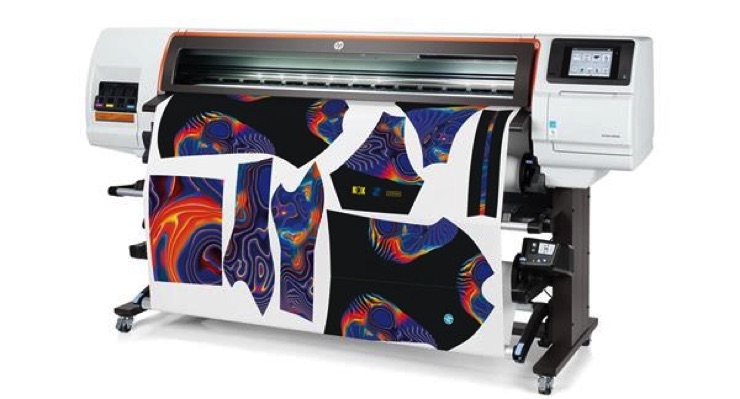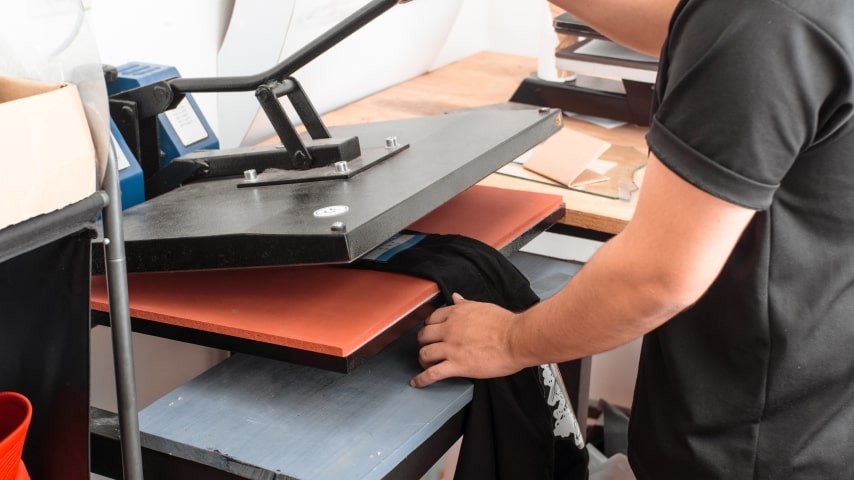Advancements in DTF Printing: Just How It's Revolutionizing the Market
The fabric printing market is undertaking a significant change, driven by the advanced developments in Direct-to-Film (DTF) technology. With exceptional ink formulas, improved film and adhesive technologies, and the integration of automation, DTF printing offers vivid, resilient prints on a range of materials, meeting the raising demand for personalization.
Advancements in DTF Technology
Advancing rapidly, DTF (Direct-to-Film) printing modern technology has undertaken substantial improvements that are reinventing the textile industry. Modern DTF printers use advanced ink formulas that result in dynamic, resilient prints with high resolution and color accuracy.

Additionally, advancements in film and glue technologies have enhanced the total application process. New movies provide much better flexibility and bond, enhancing the durability and washability of the published layouts - heat transfer vinyl printing. This makes certain that the prints preserve their honesty and vibrancy also after multiple laundries
Finally, environmental considerations have motivated the development of environment-friendly DTF solutions. Makers are progressively adopting sustainable methods, such as utilizing water-based inks and recyclable films, aligning with global efforts to decrease the market's environmental impact.
Benefits Over Conventional Approaches
When comparing DTF printing to traditional approaches such as screen printing and direct-to-garment (DTG) printing, numerous distinct advantages emerge. heat transfer vinyl printing. Among the most significant benefits is its flexibility in textile compatibility. Unlike display printing, which usually needs certain material kinds, DTF printing can be related to a more comprehensive series of materials, including cotton, polyester, and blends, without compromising print high quality
Another remarkable advantage is cost-effectiveness, particularly for tiny to medium-sized orders. Conventional screen printing becomes economically sensible just at greater quantities due to the configuration expenses included. On the other hand, DTF printing removes these configuration expenses, making it much more inexpensive for smaller sized sets and one-off styles.
Furthermore, DTF printing succeeds in durability and washability. The prints produced are durable and maintain their integrity through several laundry cycles, outmatching DTG prints that might discolor or fracture gradually. Additionally, DTF printing offers faster turn-around times. Without the demand for substantial setup, designs can be printed and moved in a portion of the time required for display printing.

Improved Style Abilities
DTF printing offers boosted layout abilities that establish it in addition to conventional printing approaches. This development enables a more comprehensive spectrum of lively colors, intricate information, and nuanced slopes, providing designers with extraordinary flexibility. The procedure involves printing a design onto a special movie, which is then transferred to material. This allows for high-resolution prints that keep clearness and sharpness, also on facility patterns and tiny text.
In addition, DTF printing supports a vast selection of fabrics, consisting of cotton, polyester, blends, and even non-textile substrates. This flexibility opens up doors for creative applications in diverse sectors such as fashion, home decoration, and promotional items. Unlike display printing, which can be limiting as a result of color splitting up and stencil creation, DTF printing simplifies the process, making multi-color and photo-realistic layouts much more easily link accessible.
Furthermore, DTF printing stands out in attaining constant color precision and vibrancy. In essence, DTF printing encourages developers to press the limits of creativity, providing aesthetically spectacular outcomes that were previously unattainable.
Price and Time Effectiveness
Among the noteworthy benefits of DTF printing hinges on its cost and time effectiveness, making it a preferred option for lots of companies. By getting rid of the requirement for display configurations and comprehensive pre-production procedures, DTF printing dramatically minimizes preliminary prices. Unlike typical methods that require considerable financial investment in screens and configuration times, DTF printing enables direct application onto various materials with marginal prep webpage work. This decrease in configuration time converts right into faster production cycles, making it possible for organizations to fulfill orders extra quickly.
Moreover, DTF printing masters producing short runs and custom-made orders cost-effectively. The capacity to generate high-quality prints without the need for huge volume commitments minimizes waste and optimizes resource allotment. This adaptability is specifically advantageous for small companies and start-ups that may not have the funding to invest in large-scale manufacturing runs.
In terms of functional performance, DTF printing's streamlined workflow improves total performance. Therefore, DTF printing stands out as a transformative remedy in the printing sector.
Future Trends in DTF Printing
Expecting future trends in DTF printing exposes a landscape noted by fast technological innovations and enhanced market demand (screen printing). One significant trend is the combination of fabricated intelligence (AI) and machine knowing formulas to optimize print high quality and simplify procedures. AI-driven systems can forecast possible issues and change settings in real-time, guaranteeing regularly high-grade result
In addition, innovations in sustainable products and environment-friendly inks are anticipated to obtain traction. As environmental worries come to be extra pressing, the sector is most likely to see a change in the direction of naturally resource degradable and non-toxic inks, reducing its eco-friendly footprint.
Modification and customization will certainly additionally play a critical function. With the growing customer need for distinct, individualized items, DTF printing modern technologies are evolving to offer more detailed and elaborate personalization options. This trend is supported by boosted software solutions that enable even more facility and imaginative styles.
Finally, the assimilation of DTF printing with other electronic systems and e-commerce services will certainly come to be more smooth. This connection will enable businesses to supply on-demand printing services directly to customers, better driving development in the market. These trends collectively highlight a future where DTF printing not only satisfies but exceeds the progressing demands of the market.
Verdict

When comparing DTF printing to standard approaches such as screen printing and direct-to-garment (DTG) printing, numerous distinctive benefits arise. Unlike screen printing, which frequently needs specific textile kinds, DTF printing can be used to a wider range of materials, including cotton, polyester, and blends, without endangering print high quality.
DTF printing provides boosted style capabilities that establish it apart from conventional printing techniques. Hence, DTF printing stands out as a transformative solution in the printing sector.
Advancements in DTF printing substantially enhance the textile printing industry by giving premium print high quality, adaptability, and efficiency.